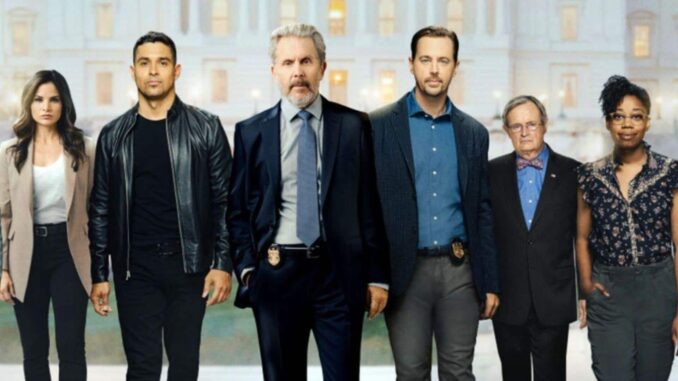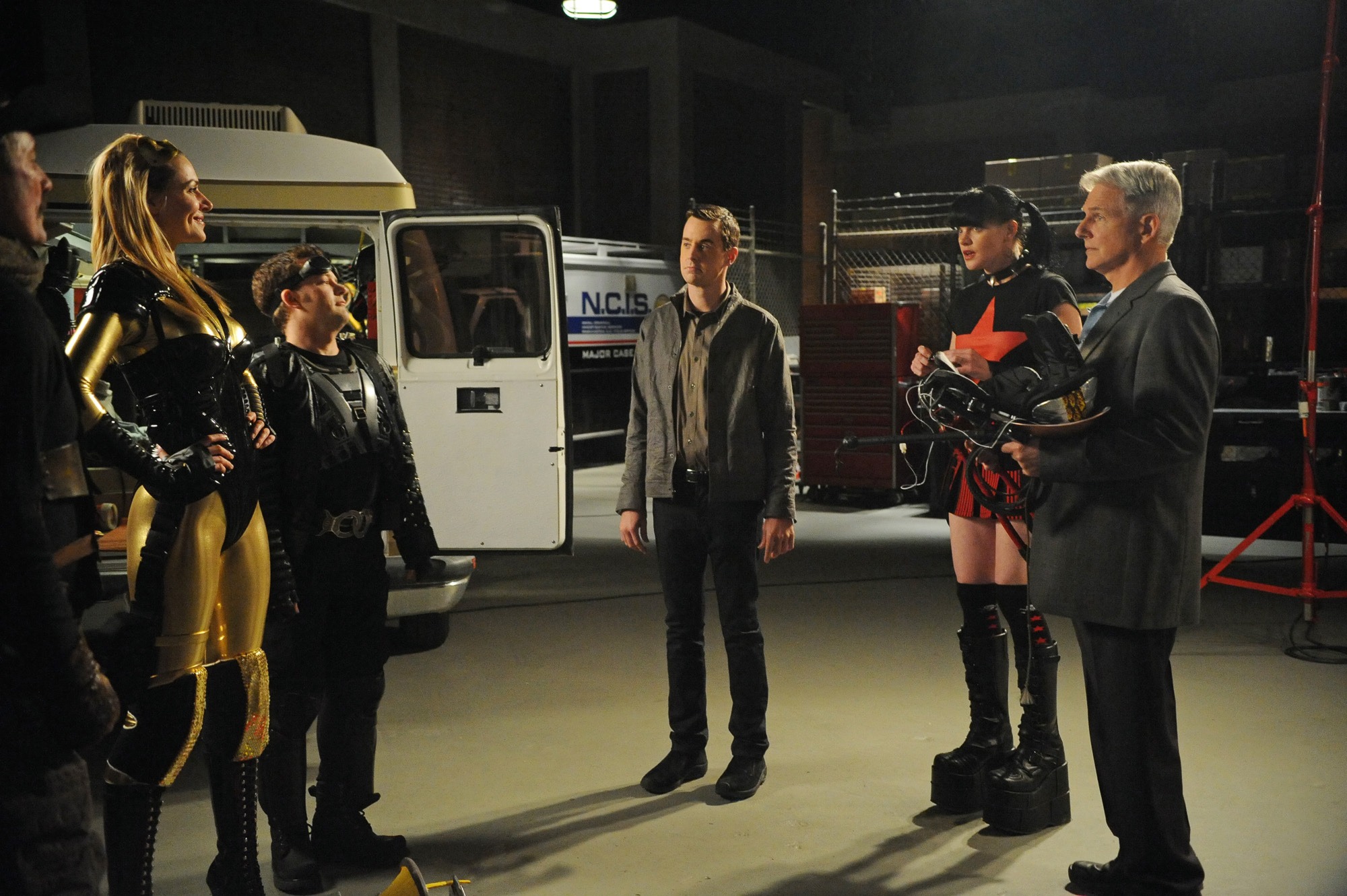
Introduction: The Hidden Depths of ‘NCIS’
“NCIS” isn’t just a crime procedural — it’s a pop culture phenomenon. With over 20 seasons, countless characters, and more plot twists than you can count, the series has cemented itself as a television staple. But here’s the twist: even the most devoted fans haven’t caught everything.
From Easter eggs buried deep in dialogue to cameos that slipped past even the most trained eyes, “NCIS” hides plenty in plain sight. So, buckle up. We’re about to go beyond the crime scenes and deep into the secret vault of behind-the-scenes trivia and storytelling tricks that even you probably missed.
1. Hidden Homages to Real-Life Agents
Ever notice some characters seem just a little too real? That’s because many are inspired by actual Naval Criminal Investigative Service agents. Writers consulted with real agents, and a few episodes pay tribute to actual missions or people—sometimes through subtle naming or dialogue.
2. Gibbs’ Basement Holds Clues
Leroy Jethro Gibbs’ basement is more than just a quirky character trait. From the boat with no exit path to the silent carpentry sessions, the set is littered with props and photos that change over the seasons, often hinting at Gibbs’ emotional state or upcoming plotlines.
3. The Number 12 Mystery
Gibbs’ Rule #12 — “Never date a co-worker” — is famously broken multiple times, especially by Tony and Ziva. But here’s the kicker: the number 12 pops up elsewhere too. From locker numbers to crime scene IDs, it’s sprinkled throughout as a subtle nod to this rule.
4. Ducky’s Backstory Mirrors the Actor’s Life
David McCallum, who plays Dr. Donald “Ducky” Mallard, was once a heartthrob musician and actor. The writers cleverly wove parts of his real-life experiences into the character’s backstory, even referencing McCallum’s knowledge of autopsies from his time on the show “The Man from U.N.C.L.E.”
5. Abby’s Tattoos? Not Real, But Always Consistent
While Abby Sciuto’s tattoos helped define her punk-goth persona, most fans don’t realize those tattoos were applied fresh for every episode. Pauley Perrette worked with the costume department to keep them identical and consistent — even the tiny ones you rarely see.
6. Michael Weatherly’s Improv Is Canon
Tony DiNozzo’s quick wit wasn’t always in the script. Many of his iconic one-liners and references were improvised. That includes the countless movie quotes — most of which were ad-libbed by Weatherly himself. Some episodes even kept bloopers in because they worked so well.
7. The ‘NCIS’ Theme Song Changes Slightly Over Time
If you listen closely, you’ll hear that the intro music evolves subtly with each new season. The tempo, instruments, and even key can shift — reflecting the changing tone of the series. It’s a sonic Easter egg few notice but sets the emotional tone subliminally.
8. Mark Harmon’s Role Behind the Scenes
Mark Harmon wasn’t just the star of the show. He served as an executive producer for many seasons and had significant input on script direction, casting, and story arcs. He even helped guide major plot decisions, like Ziva’s departure and Gibbs’ eventual exit.
9. Guest Stars That Returned in Disguise
Some actors returned to “NCIS” playing completely different characters. That’s right — the same actor, different role. If you rewatch older seasons, you’ll catch familiar faces popping up years later as new suspects or informants, a little trick producers used to save casting budget.
10. Real Military Support Helped Craft Authenticity
To maintain accuracy, the show has worked with the Department of Defense and actual military consultants. Uniforms, ranks, and terminology are kept as authentic as possible. But sometimes — intentionally — errors are made to avoid giving away sensitive or classified practices.

11. Gibbs’ Rules Evolved With Purpose
There are over 50 “Gibbs’ Rules,” but they didn’t all exist from the start. They were gradually introduced — some changed slightly over time. The rules are a narrative device to reflect Gibbs’ growth and shifting values, particularly after personal losses.
12. Easter Eggs in the Case Files
Ever pause an episode to read the case files on screen? If you did, you might have noticed some inside jokes and references to past episodes, crew members, or even rival shows. It’s the “NCIS” version of hiding notes in plain sight.
13. The Spin-Off Crossovers Tease Future Plots
Episodes featuring characters from “NCIS: Los Angeles,” “NCIS: New Orleans,” and “NCIS: Hawai’i” often teased future plotlines — sometimes subtly. Shared details like military operations or offhand mentions were strategic setups for future story arcs or spin-offs.
14. Abby’s Lab Is Physically Impossible
Let’s talk science. Abby’s lab setup—complete with advanced tech and touch-screen interfaces—was more sci-fi than real-life forensic setup. It was intentionally designed to look cool rather than realistic, though the science behind the procedures was often accurate.
15. The Café Scene with Emotional Significance
In Season 7, there’s a café scene with Gibbs and Ziva that seems simple. But the set design actually mirrors a café in Tel Aviv, where Ziva’s fictional family once dined. The props and menu were identical — a quiet nod to her backstory.
16. Vance’s Toothpick Habit Has Deeper Meaning
Director Leon Vance’s ever-present toothpick isn’t just for show. Actor Rocky Carroll chose it as a symbolic trait — representing control, habit, and an homage to old-school detectives. It became such a staple, writers worked it into the script repeatedly.
17. Palmer’s Growth Wasn’t Planned
Jimmy Palmer was supposed to be a one-off character. But Brian Dietzen’s chemistry with the cast led to his role being expanded — then promoted. His emotional journey, including dealing with loss and fatherhood, wasn’t planned but evolved based on fan reactions and actor feedback.
18. Ziva’s Hair Told a Story
When you rewatch Ziva David’s episodes, notice her hair. It changes season to season — and not just for fashion. The stylists subtly altered her appearance to reflect her emotional state, transitions in storyline, and cultural identity.
19. The Team’s Desks Are Personalized Props
Take a closer look at the team’s desks. Each desk features personal knickknacks that reflect character traits or backstory elements — like Tony’s movie memorabilia or McGee’s tech gadgets. These props were deliberately chosen and often updated as characters evolved.
20. The Real Reason Behind Cast Departures
While some exits were written as dramatic deaths or new opportunities, the real reasons were often off-screen conflicts, contract negotiations, or career changes. Cote de Pablo’s departure, for example, was a shock — but tied more to behind-the-scenes issues than story need.
21. Gibbs’ Boat Names Have Symbolism
Each boat Gibbs builds carries a name with meaning. From “Kelly” (his daughter) to others like “Rule 91,” these names are personal and often tied to emotional turning points in the show. They’re never random — always symbolic.
22. NCIS Headquarters Isn’t What You Think
The show makes it seem like it’s filmed in Washington, D.C., but most of “NCIS” is shot in California. The D.C. landmarks? Green screens and clever set design. Some shots were reused in multiple episodes — just with different lighting or digital overlays.
Conclusion: A Show Full of Secrets
“NCIS” may look like a straightforward crime drama on the surface, but dive deeper and you’ll find layers of storytelling, symbolism, and secrets even longtime fans miss. It’s like an intricate puzzle where every piece matters — and the more you watch, the more you uncover.
So next time you rewatch your favorite episode, keep your eyes peeled. You just might catch something new, even after all these years.
